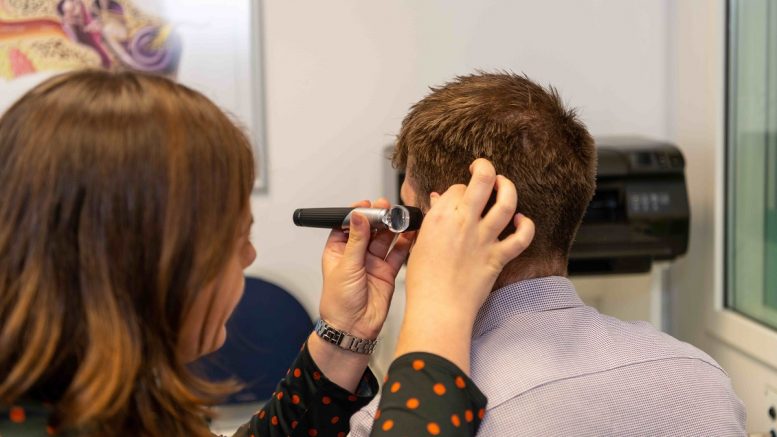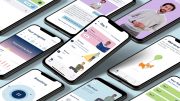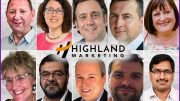Thursday 3 March marked a year since the World Health Organization (WHO) released their world hearing report which labelled hearing health care as a public health priority.
Within that 272-page document, it also acknowledged that ‘the number of people living with unaddressed hearing loss and ear diseases is unacceptable’. Within the UK alone, statistics show that it takes people, on average, 10 years to address a hearing-related issue.
Quite simply, that number needs to be brought down.
In line with the report’s release last year and WHO pushing the importance of preventative care, I spoke about the need for a national screening initiative in the UK for adults.
While we’re no further down the line of seeing something like that implemented, we did see significant progress in two other areas that are pushing the agenda of hearing care and raising vital awareness.
The growth of media representation has made an impact
Without a doubt, last year’s report was useful on a global level to help raise awareness around the importance of hearing as well as hearing care.
WHO’s World Hearing Day initiative, which happens every year, is always a good opportunity for our industry to continue raising the profile, penetrate different communication platforms, and promote vital messages.
Previously, we’ve been largely reliant on days like that to get important information and messages out, but, particularly in the second half of last year, we saw a significant shift in representation and inclusivity within the media.
As part of that, the topic of hearing has been recognised as something that, actually, doesn’t need to be a barrier.
People like Rose Ayling-Ellis going on shows like Strictly Come Dancing makes a huge impact and we saw that with the resurgence of people wanting to learn sign language. As part of this, I can’t fail to mention brands like ASOS representing hearing-related issues, as well as other TV programmes like Marvel’s Hawkeye, Eternals, A Quiet Place and The Walking Dead – films and shows that reach millions of people of all ages – for their representation.
All of those things are working towards demystifying the subject and helping wider audiences realise that there is great technology within the space of hearing care, that the world has changed and moved on.
What we’re seeing now is there is an expectation that people want to live and do so without being restricted by a condition. The age of people coming forward is also getting younger, which is great news, while the awareness we’re seeing within the media right now is helping people to come forward.
However, media representation is not the only area aiding this.
Over-the-counter hearing aids are being hotly debated but are they a good or bad thing for the hearing care industry
The emergence of some of those big technology giants playing in this area has also helped open up a whole new conversation among people, with technology starting to become an enabler.
That leads us nicely on to the possible passing of legislation on over-the-counter (OTC) hearing aid products in the USA. While that legislation is still being hotly debated and needs to go through the FDA (Food and Drug Administration), we’ve seen companies already talking about their products, assuming that it will go through.
BOSE has been part of that conversation. GN and Jabra, too. We still wonder how it will be received with EU Medical regulation, given that hearing aids are still classified as medical devices. It’ll be interesting to see how suppliers navigate around that issue during 2022.
If it gets approved in the USA and as the experience and volume of experience grow, so too will the confidence around OTC products.
That – that initial experience with OTC hearing aids – is what is key here. When people start to see more positive outcomes and around growing the market, getting people to embrace preventative technology earlier, then I think we will see those products push into Europe.
In order for that to be successful, we need to make sure that the products meet the experience level that people expect when they are experimenting. It needs to be positive. One bad experience could put a customer off. It’s a real knife-edge to get that right.
Leaving someone on their own to figure that out is a risk. These products are creating greater awareness and are normalising hearing-related issues, but those first experiences need to be protected.
Final thoughts
Ultimately, we want people to understand that getting your hearing checked is easy and is as important as getting your eyes and teeth checked. It needs to be wrapped up in the same conversation.
Businesses and bodies, like Boots Hearingcare, promoting the link to hearing well means living well is part of that and plays into what WHO is saying in their report – that it is completely possible to live well across your life course with hearing loss, so long as you have the right intervention or have taken the right preventative care.
Hearing loss does not need to be disabling. Now more than ever, people need to stay connected to the world around them and, slowly, we’re starting to see that shift in mindset.
Article by Karen Shepherd, Director of Professional Standards at Boots Hearingcare





